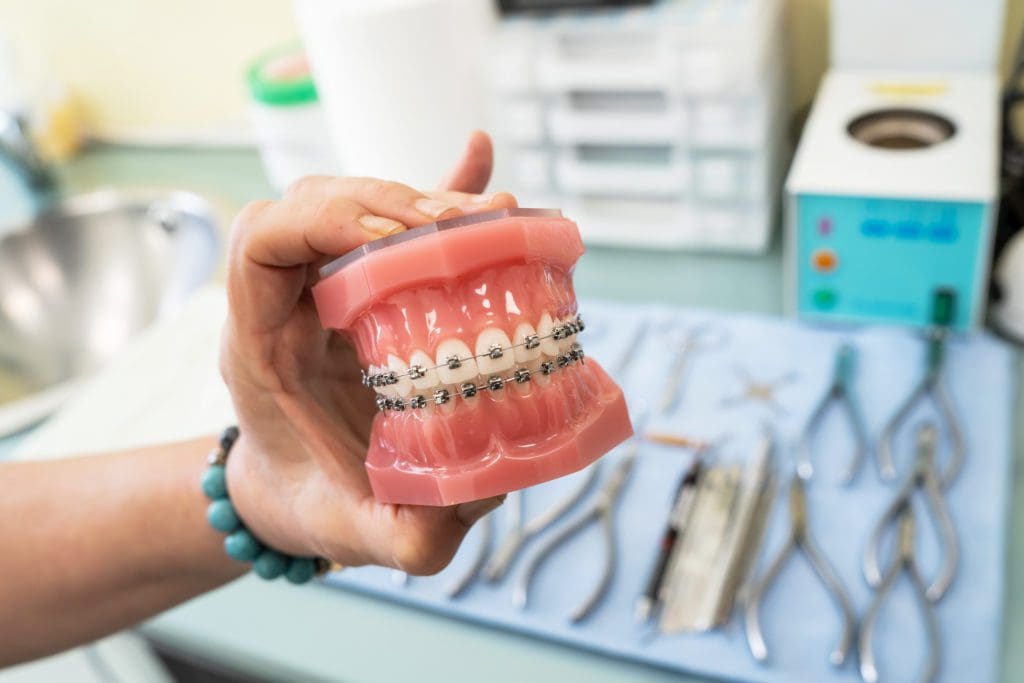Locating the Right Cumming Orthodontist for Your Braces and Aligners Requirements
Locating the Right Cumming Orthodontist for Your Braces and Aligners Requirements
Blog Article
Comprehensive Overview to Orthodontics Treatments for Fixing Oral Misalignments
In the world of orthodontics, the journey to accomplishing a flawlessly straightened smile involves a myriad of treatments tailored to deal with dental imbalances. From standard dental braces to undetectable aligners and also medical choices, the field of orthodontics uses a series of options to resolve differing levels of dental abnormalities. Understanding the complexities of each procedure, including their systems, benefits, and potential downsides, is essential in making educated choices concerning one's orthodontic therapy. As we navigate via the detailed overview to orthodontic procedures for fixing oral misalignments, the intricate details of each method will unfold, dropping light on the path towards a functional and unified oral placement.
Orthodontic Procedures Overview

Along with clear aligners and standard dental braces, orthodontists may also advise various other treatments like headwear, palatal expanders, or retainers to attend to specific alignment issues (orthodontics). These treatments are customized per client's one-of-a-kind demands and may entail a mix of therapies to achieve the desired outcomes. Regular changes and surveillance are important parts of orthodontic therapy to guarantee progress is on track and to make any kind of required modifications in the process. By undergoing orthodontic procedures, individuals can not only accomplish a straighter smile but additionally boost their general dental health and feature.
Standard Braces: How They Work
When taking into consideration orthodontic treatments for dental misalignments, conventional braces stick out as a reliable method for correcting teeth placing. Standard dental braces consist of brackets, cords, and bands that work together to apply continuous stress on the teeth, gradually relocating them right into the desired placement. The braces are affixed to the teeth using an unique adhesive, and the cords are threaded with the brackets. By adjusting the tension of the cables, orthodontists can regulate the direction and force put on each tooth, leading them right into proper placement in time.
As pressure is used to the teeth through the dental braces, the bone surrounding the teeth is improved to support the new tooth settings. Clients will require routine modifications at the orthodontist's workplace to make certain the dental braces proceed to use the proper stress for effective teeth movement.
Unnoticeable Aligners: Disadvantages and pros
These clear, customized trays are virtually unseen when used, making them an appealing alternative for people looking for a much more aesthetically pleasing orthodontic therapy. Clients can eliminate the aligners prior to eating or cleaning their teeth, decreasing the threat of food getting stuck in the home appliance and simplifying the cleaning procedure.

Surgical Orthodontic Options
Surgical interventions in orthodontics present practical options for dealing with complicated dental misalignments that may not be effectively resolved through conventional orthodontic treatments. While traditional dental braces and unseen aligners can deal with lots of orthodontic problems, specific instances need surgical intervention to attain ideal outcomes. Surgical orthodontic choices are generally recommended for extreme malocclusions, substantial jaw inconsistencies, and cases where the underlying bone framework needs alteration to accomplish proper alignment.
One usual surgical orthodontic procedure is orthognathic surgical procedure, which includes repositioning the jaws to correct practical concerns such as trouble chewing or talking. This surgical treatment is commonly carried out in cooperation with an orthodontist that assists align the teeth prior to and after the procedure. Surgical orthodontics might likewise entail procedures to reveal affected teeth, remove excess periodontal cells, or reshape the jawbone to develop a much more harmonious facial account.
Before considering surgical orthodontic alternatives, patients undertake a detailed evaluation to figure out the necessity and prospective advantages of such interventions. cumming orthodontics. While surgery might seem daunting, it can substantially boost both the function and appearances of the smile in cases where traditional orthodontic therapies fail
Retainers and Post-Treatment Treatment

Failure to comply with post-treatment care instructions can result in regression, where the teeth progressively relocate back towards their initial settings. Constant retainer wear, excellent dental hygiene, and routine dental check-ups are important for maintaining the outcomes achieved through orthodontic surgical procedure and making certain the lasting stability of the fixed dental placement.
Final Thought
To conclude, orthodontic treatments use different options for remedying dental misalignments. Traditional dental braces use steel braces and wires to change teeth right into proper placement. Undetectable aligners offer a more very discreet choice yet might not be appropriate like it for all cases. Surgical orthodontic alternatives are offered for a lot more extreme imbalances. Retainers are typically made use of post-treatment to keep the new placement. In general, orthodontic treatments can successfully improve oral health and visual appearance.
As we navigate with the thorough guide to orthodontic treatments for dealing with dental imbalances, the complex information of each method will certainly unravel, shedding light on the path towards a unified and functional dental positioning. - cumming orthodontics
One of the most common orthodontic treatments is the use of braces, which are composed of steel braces and cords that use gentle stress to progressively change teeth into the preferred setting.When taking into consideration orthodontic treatments for dental imbalances, conventional braces stand out as a tried and true approach for dealing with teeth positioning. Additionally, unnoticeable aligners may not be view it suitable for complex orthodontic issues that require even more considerable teeth motion, as they are commonly advised for light to modest situations. Retainers are customized orthodontic tools made to hold teeth in their dealt with placements after the conclusion of orthodontic therapy.
Report this page